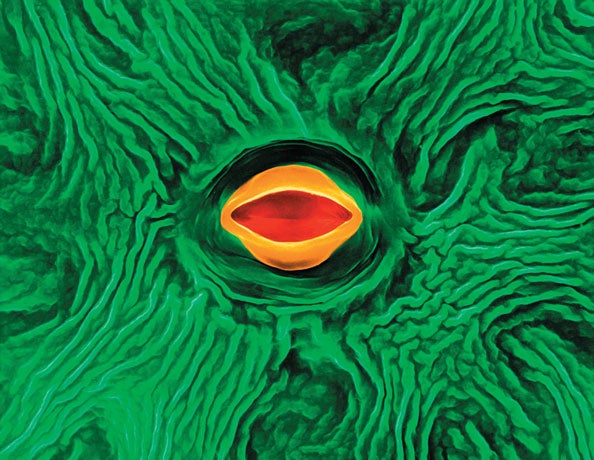Leaves and seeds: the big breakthrough

Even with the water in its roots, a tree still needs to transport it up its trunk to the all-important leaves which manufacture food – and that's a long way in the case of some trees.
For a long time no one could work out how trees did this. Of course, they have no moving parts like heart pumps to do the job for them. It was once thought that external air pressure caused water to flow upwards, as it does when you suck a straw, but air pressure simply isn't strong enough to pump water up a 100ft tree.
The answer is down to the ingenious design of tree leaves which contain millions of tiny perforations, or holes, called stomata. Trees open or close these pores, depending on the weather and conditions of the day. When it is hot, water in the leaves evaporates through the stomata making the sap in the tree trunk more concentrated. This drags underground water upwards through the trunk and into the leaves at the top of the tree. This process is called transpiration.
The tree's final challenge is to find a way of spreading their offspring, even though they cannot walk or move. The earliest species used the wind to spread spores in much the same way as fungi. The problem is that spores need exactly the right conditions to germinate – usually they must land in wet places, such as marshes or bogs. In dry climates, this is a big problem. Then, about 360 million years ago, trees came up with a much better solution. Seeds.
Unlike spores, seeds contain a partly formed tree embryo as well as a substantial food store of sugar, protein and fats. The embryo, with its larder stocked with food, is then encased in a coat (a testa), ready for a sometimes epic journey, using one of a number of alternative transport systems.
Seeds dramatically increase a tree's chances of successful reproduction. They are tougher than spores, they can survive droughts, they take their own food rations with them and some can even float. The first seed-bearing trees were the Cycads which have been traced back to about 270 million years ago – about 40 million years before the first dinosaurs appeared. About 130 species of Cycads are still living today, although many are under threat of extinction owing to the destruction of their habitats. These trees also mastered the art of sexual reproduction, which usually requires the genes of two different trees to combine to make a seed. But that leaves a final, apparently insuperable challenge: how could two different parents mix their genes when they are both, literally, rooted to the ground?
Subscribe to Independent Premium to bookmark this article
Want to bookmark your favourite articles and stories to read or reference later? Start your Independent Premium subscription today.

Join our commenting forum
Join thought-provoking conversations, follow other Independent readers and see their replies